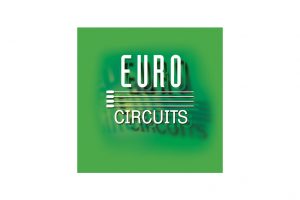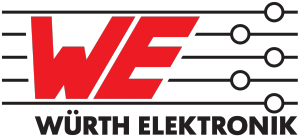Maximum power point tracker
Abstract
The Maximum Power Point Trackers (MPPTs), or how we like to call them “MuPPeTs”, are used to maximize power extraction under all (racing) conditions. MuPPeTs may implement different algorithms and switch between them based on the operating conditions of the solar panels.
Solar cells have a non-linear output which is dependent on solar radiation, temperature and resistance. Without the MuPPeT, the panels would be directly connected to the battery. However, the battery voltage is most often not the optimal voltage at which the solar panels deliver their maximum power. Based on the voltage of the battery and the solar panels the correct DC to DC conversion topology should be used. The three DC to DC topologies commonly used are:
- Buck, VIN > VOUT
- Boost,VIN < VOUT
- and Buck-Boost.
The topology refers to how the switches (MOSFETs), output inductor, and an output capacitor are connected.
Requirements
Because the MuPPeT is primarily used during the Solar Sport One (SSO) races, they should comply with their regulations (Link). Also, we added some additional requirements:
- Max. Input Voltage Up to 49 V DC, IF VIN < VOUT
- Voltage Output 32,5 - 52,6 V DC, nom. 48 V DC
- Max input Current 6A
- Efficiency > 98 %
- Low Cost < €200, inc. components and PCB.
- PCB dimensions 160 x 100 mm (Eurocard)
- Multiple input (separate) Channels 3 - 4
- High ambient temperature est. 70° C
- Interface communication
- CANbus
- UART, for debugging purposes
Component selection
This section discusses the function of the main components of the MuPPeT and gives our design requirements for the most critical components.
Powerpath
Usually, solar panels are connected in series (strings) to match the required input voltage range of the MPPT. However, to make optimal use of the hull shape and also to make maintenance easier we use a different type of solar panels. This results in different output voltages, which makes it challenging to optimize the string voltage to match each other. Because of this, we have chosen to create a powerpath that allows a single solar panel for each MPPT path. This results in using a power path based on the boost topology, as the battery voltage is higher than the maximum power point voltage of our solar panels
To reduce the cost we designed a MuPPeT with four separate input channels (power paths), each measuring their voltage and current. The tracking algorithm of the four channels are based on Perturb and Observe (P&O) and is done by one ATxmega. Therefore each solar panel can track different MPPs by alternating the input channel between sweeps.
However, it is always recommended to switch the power paths asynchronous. This will reduce heat generation and output ripple. By reducing the output ripple the minimum required capacitance also decreases, reducing the cost for every single power path. The phase offset is depended on the number of used input channels. If all four channels are used, we recommend using a 90° phase-shift.
ATxmega
The ATxmega was primarily selected on its event system, and the number of Analog to Digital Converter (ADC) channels, which allows independent MPPT for each channel. The ATxmega can respond to internal and external triggers through interrupts and can connect software triggers to those interrupts using the event system. This allows for a fast executing of the program in response to other events.
In our case, a Timer/Counter (TC) overflow event is used. The ADC will be configured to do a sweep on four channels. This is very useful because the TC is used for Pulse Width Modulation (PWM) generation, therefore the ADC sampling will be synchronized to the PWM generation.
Current measurements
Current measurements can be done by measuring the voltage drop across a low-ohmic resistor. There are two common ways for a resistor to be placed when doing current measurements:
High-side, between the power supply and load.
Low-side, between the load and ground.
Low-side current measuring is usually used when dealing with high voltages, or in applications where the supply voltage may be prone to spikes or surges. Due to the low common-mode voltage at the inputs, a difference amplifier topology can be used. In our case, scaling accuracy / zero point calibration is set by the quality and value of the user-selected resistors. The input current of each solar panel is measured in the ground return path of each power path connection.
Safety
We are using a BTS50085 as a power switch to comply with SSO regulation 7.16. It isolates the power source (solar panels) from the rest of the electrical system during emergency situations. If multiple MuPPeTs are used, the safety contacts can be connected in parallel to an external emergency switch (NC).
The BTS50085 power switch also has current-sense diagnostic feedback, which measures the output current of all combined power paths of the MuPPeT.
Voltage Regulators
The LTC3630 was selected since we used the same IC on the data logging system. It has very high efficiency and maximum input voltage range to protect the circuit against transients. To optimize the efficiency of the MOSFET drivers the Vgate will be changed by measuring and adjusting the value of the user-selected resistors.
CAN Transceiver
he MCP2561 was selected since we used the same IC on our data logging system. Datalogger
Schematics
The full set of schematics for the MuPPeT are made available upon request free of charge, by requesting the CAD files you agree to not use the design files for commercial purposes.
Layout
When the component placement is done the routing starts with the traces for a single power path and multiply this 4 times in total. Keeping in mind short return paths for the switching MOSFETs and it’s driver. Next, we worked our way down to the analogue signals and as of the last step in the design progress we routed the DC signals. Once the routing process was completed we start working on the silkscreen adding our sponsors and giving it a personal touch by adding some (arguably terrible) jokes made during the late-night meetings while still in the design process.
Software architecture
Will become available soon
Thanks to



